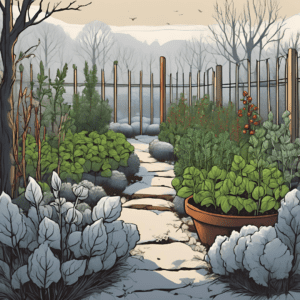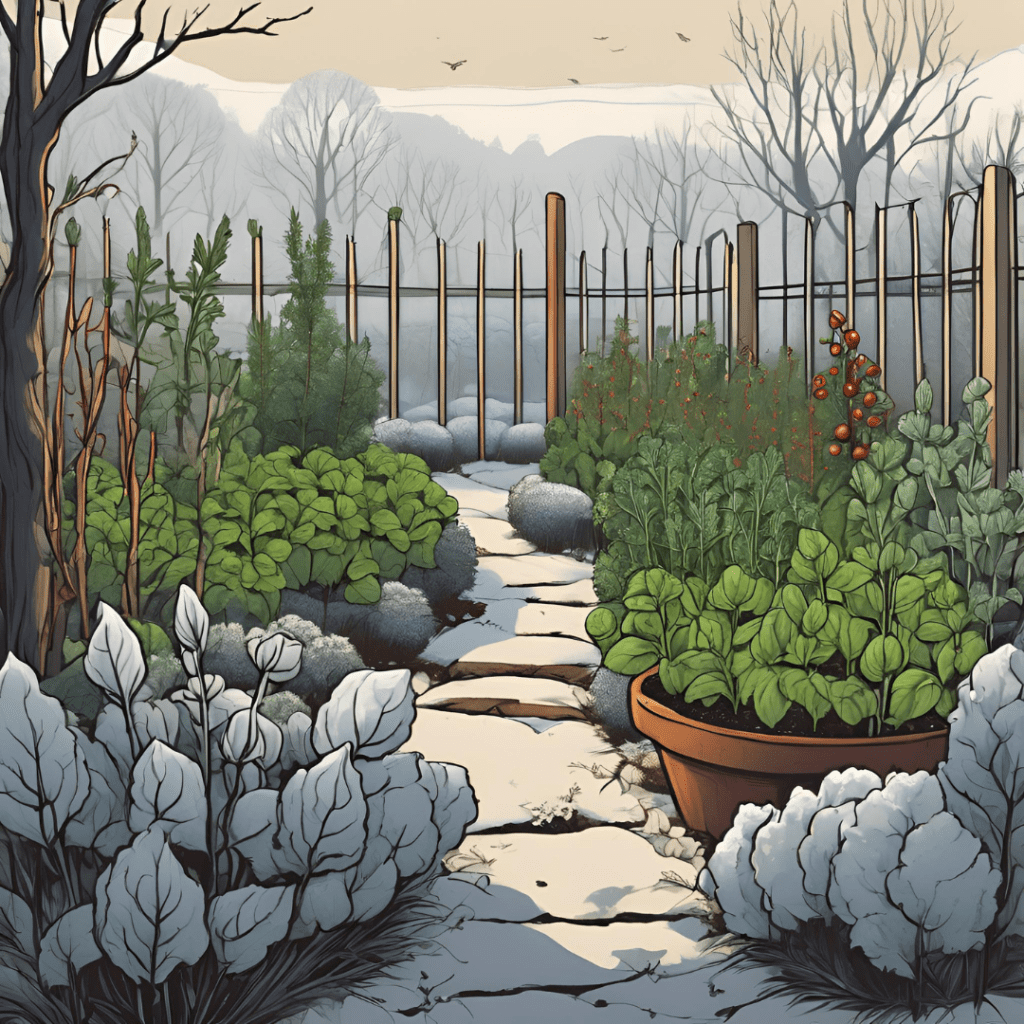As we move deeper into the year, February marks an exciting time for herb gardeners. The days are slowly getting longer, and although winter still has its grip, the preparations for spring can begin in earnest. This month is all about planning and preparing for the growing season ahead. Whether you’re starting seeds indoors or refreshing your outdoor herb containers, this is the time to set the stage for a thriving herb garden.
Indoor Herbs: Start Sowing Seeds for Early Spring
February is the ideal time to start sowing seeds indoors for herbs that thrive in the warmer months. By starting seeds now, you give them a head start, allowing them to develop strong roots and healthy growth before they are eventually transplanted outside once the risk of frost has passed.
Key Herbs to Start Indoors in February:
- Basil: Known for its sensitivity to the cold, basil benefits from early indoor sowing. Plant basil seeds in small pots or seed trays, using a high-quality potting mix. Make sure to keep the soil moist but not waterlogged, and place the pots in a sunny spot or under grow lights to ensure sufficient light for germination. Basil loves warmth, so keep the temperature around 20°C.
- Parsley: Parsley can take longer to germinate, so sow seeds now for an abundant spring harvest. Like basil, parsley appreciates bright light and warmth. Soak the seeds in warm water overnight before sowing to encourage faster germination.
- Chives: Another herb that benefits from early indoor sowing, chives are hardy, but starting them indoors ensures you can enjoy their fresh, onion-like flavour earlier in the season.
Indoor Seed Sowing Tips:
- Use Heat Mats: A heat mat can help maintain a consistent temperature for your seeds, especially during cold February nights.
- Light: If natural sunlight is scarce, consider using a grow light to supplement the light your herbs receive. Aim for about 14-16 hours of light per day.
- Watering: Keep the soil consistently moist but avoid waterlogging, as this can lead to root rot in seedlings.
Outdoor Preparations: Refreshing and Repairing
While it may still be too cold to plant outdoors, February is the perfect time to start preparing your outdoor herb garden for spring. Checking on your existing outdoor herb pots and refreshing them for the upcoming growing season can save you time later.
Check for Frost Damage
Winter weather can be tough on herbs, even hardy varieties like rosemary, thyme, and bay. Take time in February to inspect your pots for any signs of frost damage. If your herbs look wilted or browned, don’t panic – many herbs will recover as the weather warms. However, you may need to trim away any dead or damaged growth to encourage new shoots.
Re-pot or Add Fresh Compost
Now is a great time to re-pot your herbs if they’ve become root-bound over the winter. Gently lift the plant from its pot, tease out the roots, and replant it in a larger pot with fresh compost. For herbs that don’t need re-potting, consider adding a layer of fresh compost or organic matter to the top of the soil. This will help replenish nutrients and give your plants a boost when the growing season begins.
Prepare for Spring Planting
Although you won’t be planting outdoors just yet, February is an excellent time to start planning. Think about the layout of your herb garden, the herbs you want to grow, and whether you’ll need additional pots or compost. Planning ahead ensures you’re ready when the warmer weather arrives.
Harvesting and Using Winter Herbs
Though February is still cold, some hardy herbs like rosemary, thyme, and bay can be harvested sparingly. These herbs are packed with essential oils during the winter months, making them particularly potent for cooking and magical use.
Winter Harvesting Tips:
- Prune Lightly: Only harvest small amounts of your outdoor herbs to avoid stressing the plant.
- Drying Herbs: If you have more than you can use immediately, consider drying the sprigs you collect. Simply hang the herbs in a dry, dark place, or use a dehydrator to speed up the process.
Moon Phase Tips: Aligning with Lunar Energy
Working with the moon phases can help you harness natural energy in your herb garden, promoting growth and balance. February’s moon phases offer ideal opportunities for both sowing seeds and planning your garden layout.
New Moon (mid-February): Planting and New Beginnings
The New Moon is a powerful time for new beginnings and growth. It’s the perfect moment to start planting your seeds indoors, as the moon’s energy encourages strong root development. As you plant, set intentions for what you hope to achieve with your herb garden this year. Whether it’s a bountiful harvest, using more herbs in your magical practice, or creating a beautiful green space, take time to visualise your goals as you work with the energy of the New Moon.
Full Moon (late February): Planning and Reflection
As the Full Moon approaches, focus on planning your outdoor herb garden for the warmer months. The Full Moon is a time of reflection and completion, so use this energy to finalise your plans. Make a list of the herbs you want to grow, gather your gardening tools, and ensure you’re prepared to plant as soon as the weather permits.
Conclusion: February is the Month to Plan and Prepare
February may still be cold, but it’s the perfect time to start preparing your herb garden for the spring season ahead. By sowing seeds indoors, checking outdoor herbs for frost damage, and planning your garden layout, you set the foundation for a successful growing season. Aligning your efforts with the New Moon and Full Moon phases will add intentional energy to your gardening practice, ensuring a bountiful and magical year in your herb garden.
Blessed be!
Don’t forget to check out my Etsy Shop for spell & ritual kits
Discover more from Lancs Green Witch
Subscribe to get the latest posts sent to your email.




